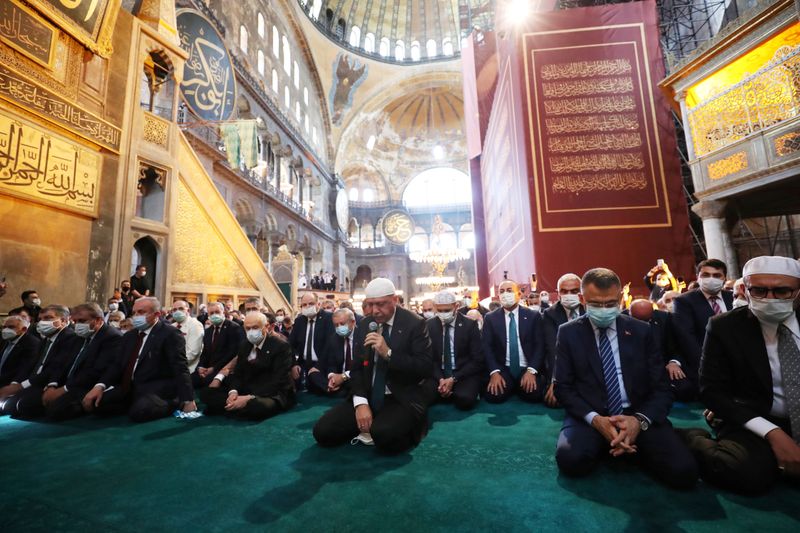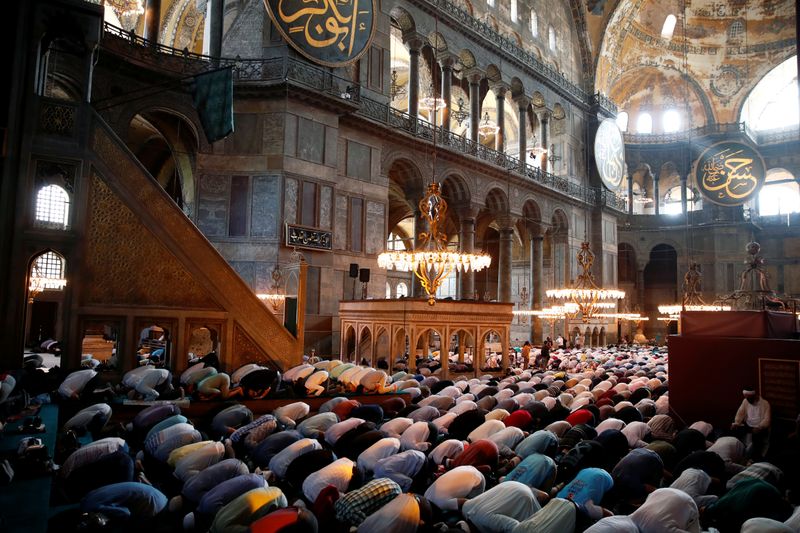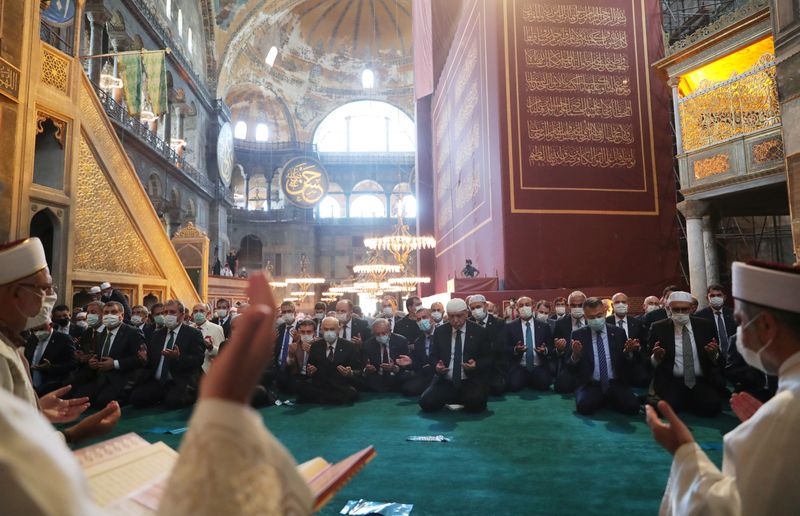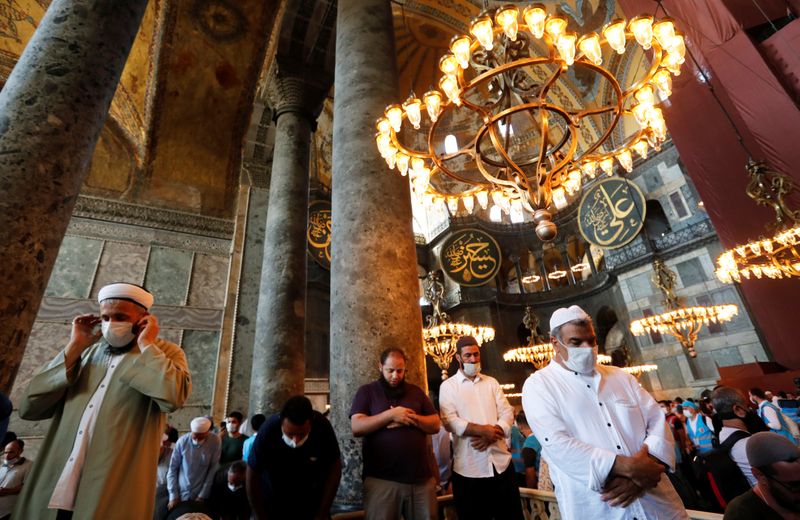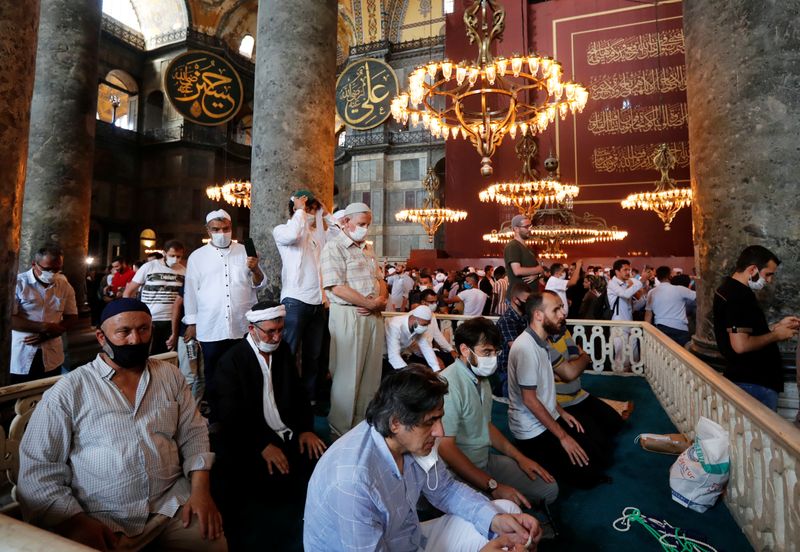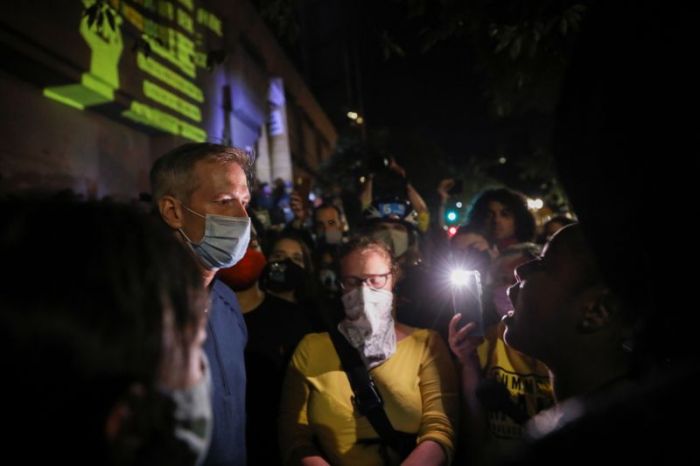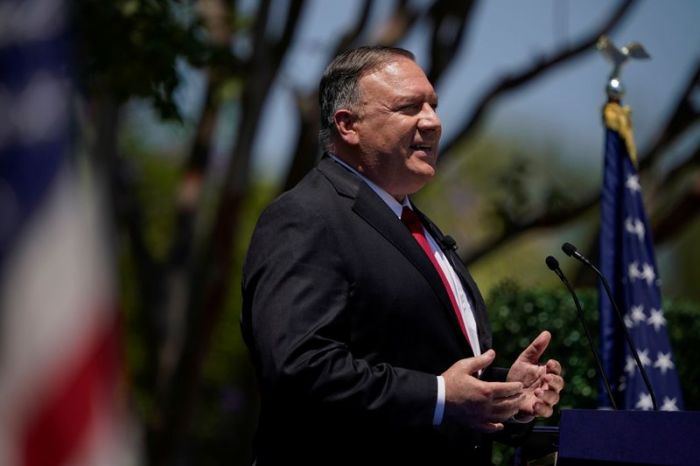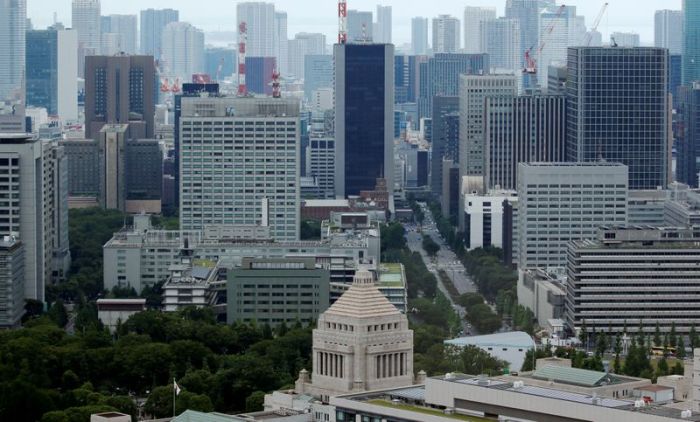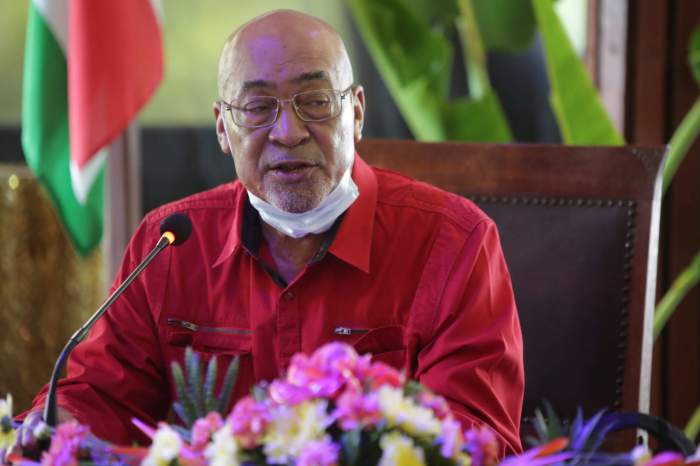ISTANBUL (Reuters) – Turkey’s President Tayyip Erdogan joined huge crowds on Friday for the first prayers at Hagia Sophia in nine decades, sealing his ambition to restore Muslim worship at an ancient site long revered in both Christianity and Islam.
After the call to prayer rang out from four minarets surrounding the mosque, whose rose-pink walls and huge grey dome have dominated Istanbul since Christian Byzantine times, hundreds knelt in prayer inside the building.
Outside, tens of thousands more prayed in a public square and on sidewalks, squeezing into spaces between cars or in cafes, joining a ceremony which many saw as righting a historic mistake when the mosque was converted to a museum in 1934 by modern Turkey’s secularist founder Mustafa Kemal Ataturk.
Hagia Sophia was the largest cathedral in the world for 900 years until its capture by Ottoman Sultan Mehmet the Conqueror in 1453, after which it was one of Islam’s most exalted mosques for nearly another 500 years.
“This is the opening of a place of worship that was conquered by the right of the sword by the holy conqueror,” said worshipper Latif Ozer, 42. “This is a source of great pride for us, great excitement.”
That excitement has not been universally shared. Church leaders and some Western countries have sharply criticised Turkey’s move, saying the shift to exclusive Muslim worship at Hagia Sophia risks deepening religious divisions.
Pope Francis said he was deeply pained by the decision, which came after a Turkish court annulled Hagia Sophia’s status as a museum two weeks ago. Erdogan immediately issued a decree converting it once again to a mosque.
In Greece, church bells tolled in mourning on Friday. Most Greeks consider the monument central to their Orthodox Christian religion. Greek criticism of the conversion has been scathing, underscoring the countries’ tense relations.
Greek Prime Minister Kyriakos Mitsotakis called Turkey a “troublemaker”, and the Hagia Sophia conversion an “affront to civilization of the 21st century”.
“HEARTBREAK” IS ENDING
Several hundred invitees joined Erdogan for the ceremony inside the sixth-century building.
The president, his head covered by a white prayer cap, read a Koranic recitation before the head of Turkey’s religious directorate Ali Erbas addressed worshippers.
“The longing of our nation, which has turned into a heartbreak, is coming to an end today,” Erbas said from the pulpit, holding a sword in his hand – a tradition for preachers in mosques which have been captured in conquest, he later said.
“God willing, we will continue this tradition in the future,” Anadolu agency quoted Erbas as saying as he left the mosque.
New white curtains covered an image of Mary and Jesus which would have faced the worshippers, but pictures of angels were still visible on arches supporting the mosque’s cavernous dome.
Officials say that glittering mosaics and other art in the main hall will be concealed during prayer time, but will remain uncovered in other parts of the building.
Earlier, crowds formed at checkpoints around the historic heart of Istanbul where massed police maintained security. Once through the checks, worshippers sat apart on prayer mats in secured areas outside the building in Sultanahmet Square.
A large screen and speakers set up in the square broadcast proceedings to a crowd which Erdogan said was 350,000-strong.
CHRISTIAN ICONS CONCEALED
“God is greatest,” chanted people in the square. Some held Turkish and Ottoman flags.
During his 17-year rule, Erdogan has championed Islam and religious observance and backed efforts to restore Hagia Sophia’s mosque status. He said Muslims should be able to pray there again and raised the issue – popular with many pious AKP-voting Turks – during local elections last year.
Erdogan has reshaped Turkey’s modern republic, established nearly a century ago by the secularist Mustafa Kemal Ataturk, lifting a ban on Muslim headscarves in state institutions, promoting religious education and taming Turkey’s powerful military, once a bastion of Ataturk’s secular values.
After leaving Hagia Sophia, Erdogan went straight to the nearby Fatih (Conqueror) mosque, named after Sultan Mehmet who seized Istanbul for the Ottomans.
“Hagia Sophia will continue to serve all believers as a mosque and will remain a place of cultural heritage for all humanity,” Erdogan said, adding he wanted to “visit the tomb of Sultan Mehmet the Conqueror, the real owner”.
(Additional reporting by Mert Ozkan, Ece Toksabay and Ezgi Erkoyun; Editing by Dominic Evans and Andrew Heavens)

